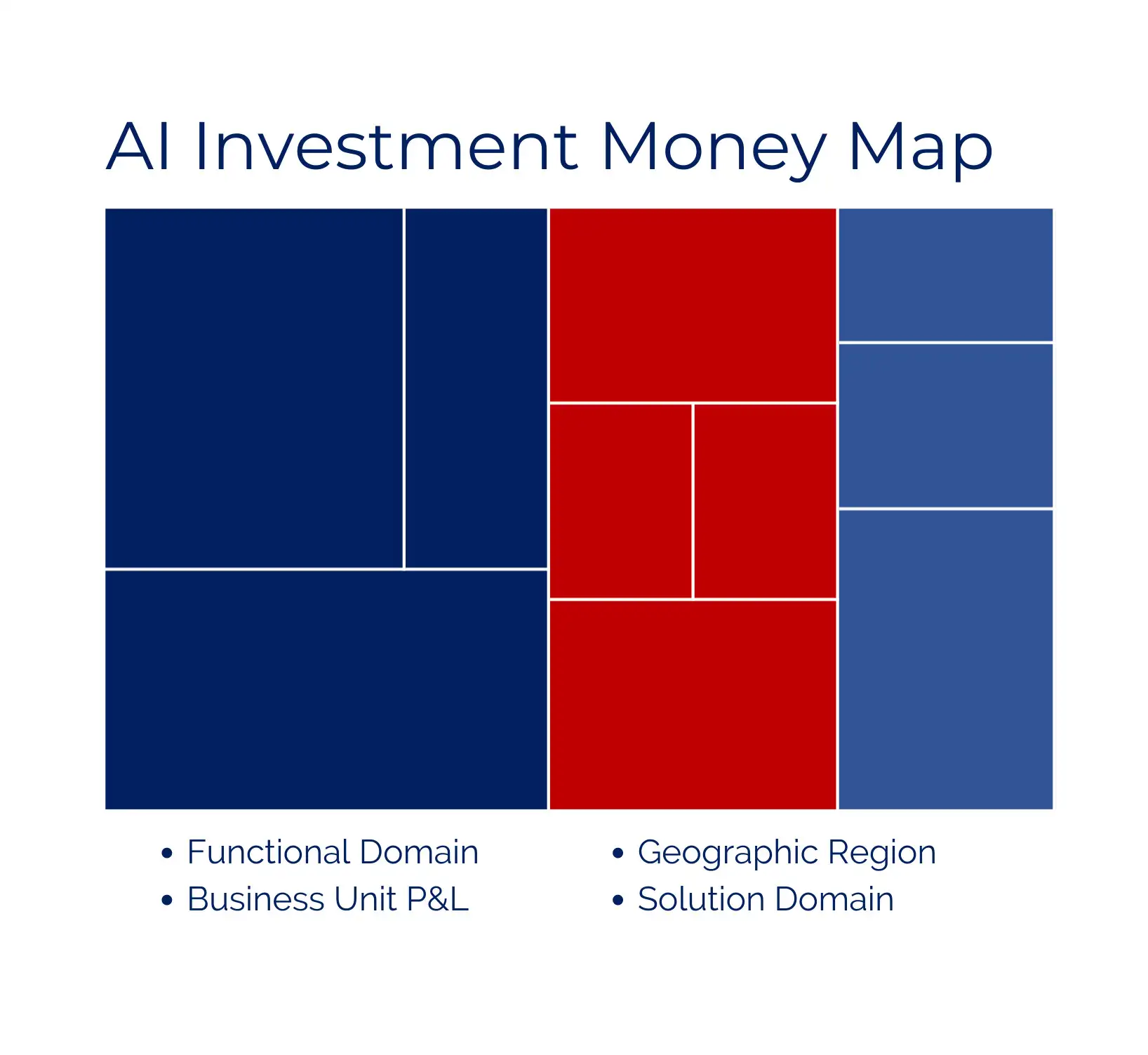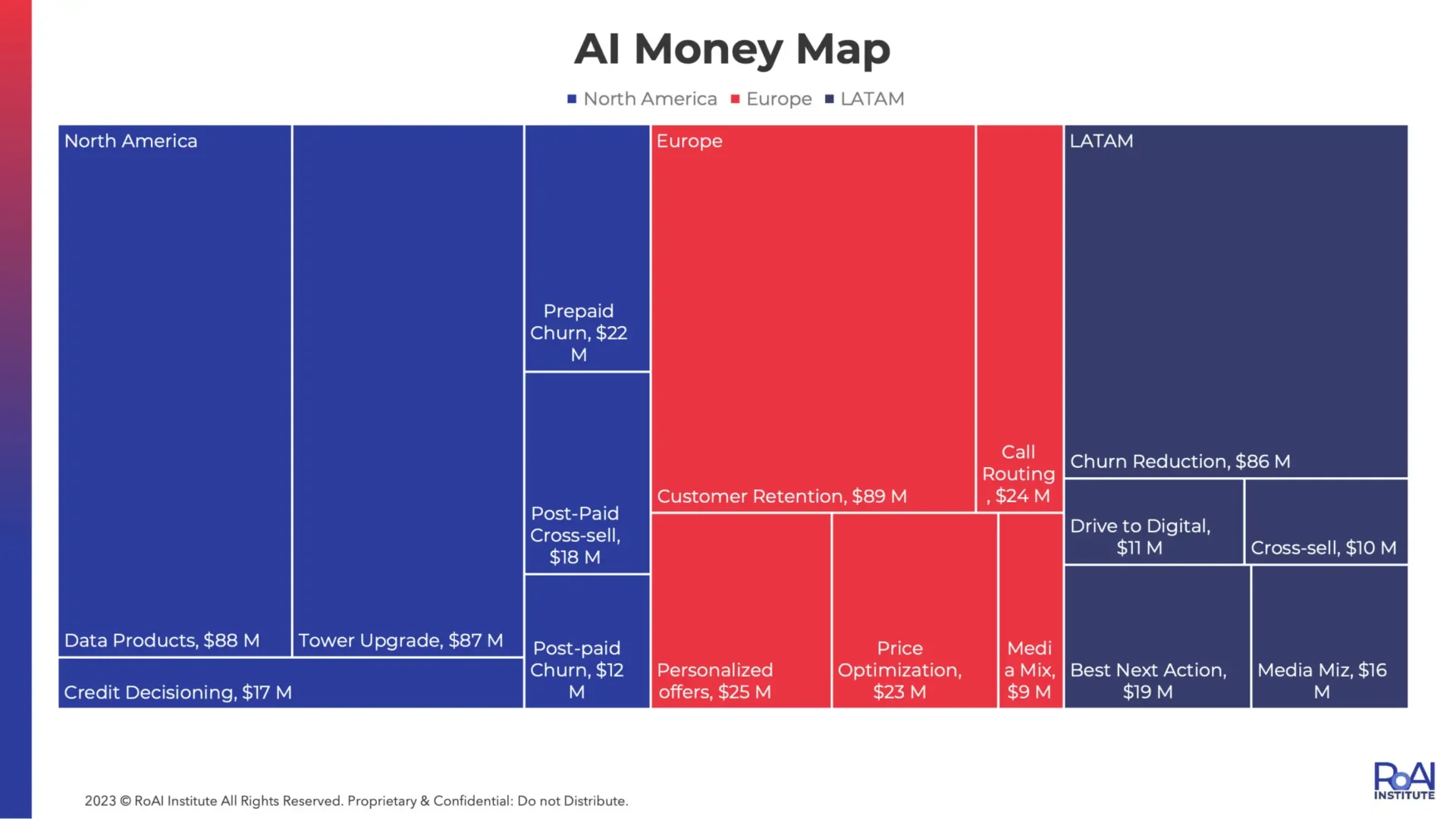As someone who’s been in the trenches of AI implementation for years, I’ve seen firsthand the excitement and challenges of introducing AI into an organization.
Time and again, I’ve watched business leaders light up with possibilities, only to be bogged down by the complexities of turning those AI dreams into reality.
If you’re reading this, you’ve probably felt that mix of excitement and trepidation. Maybe you’ve been given the green light to implement AI in your organization and wondering where to start. Or perhaps you’ve already dipped your toes in the AI waters, but you’re struggling to show real, tangible results.
You’re not alone.
Our research at the Return on AI Institute found that more than 90% of organizations face challenges in realizing AI’s full potential.
But here’s the good news: there’s a tool that can help you cut through the noise and focus on AI initiatives that truly move the needle for your business.
We call it the AI Money Map.
In this post, I will explain what an AI Money Map is, why it’s crucial for your AI journey, and how you can create one for your organization.
What is an AI Money Map?
An AI Money Map is a strategic tool that helps you identify and sequence AI use cases and opportunities based on principles unique to your company. It visually represents your highest-impact, AI-driven use cases that address your organization’s top business priorities.

Think of it as your roadmap to AI success. It’s not just about listing potential AI projects – it’s about aligning those projects with your business goals, prioritizing them based on potential value, and creating a clear path to implementation.
Why You Need an AI Money Map
In our studies at the Return on AI Institute, we’ve seen a clear pattern emerge. Organizations that take the time to create and maintain an AI Money Map are far more successful in their AI initiatives than those that don’t.
Why?
Because an AI Money Map does several critical things:
- It reduces organizational friction by clearly defining and prioritizing use cases upfront.
- It helps produce successful proof points quickly, which builds momentum and enthusiasm for AI across the organization.
- It provides a framework for scaling beyond pilots and individual use cases.
Without a Money Map, we often see organizations stumble with false starts and missed opportunities. This erodes trust among stakeholders and creates additional hurdles for future AI initiatives.
Create Your Own Money Map
Let’s walk through how you can create one for your organization. The process is both an art and a science, requiring a blend of data analysis and strategic thinking.
Step 1: Identify Your AI Use Cases
Start by brainstorming and listing all potential AI use cases across your organization. This could include projects like:
- Customer segmentation improvements
- Predictive maintenance systems
- Supply chain optimization
- Personalized marketing campaigns
- Fraud detection enhancements
Step 2: Estimate the Value
For each use case, estimate the potential value it could bring to your organization. This could be in terms of:
- Incremental revenue
- Cost savings
- Improved efficiency (time saved)
- Enhanced customer satisfaction
Be as specific as possible with these estimates, even if they’re rough at first. You’ll refine them over time.
Step 3: Choose Your Dimensions
Decide on the dimensions you want to use to categorize your use cases. Common dimensions include:
- Business function (Marketing, HR, Supply Chain, etc.)
- Technical Feasibility (Analytics Ready Data, Delivery systems in the last mile, AI Talent, etc.,)
- Geographic region (North America, Europe, Asia, etc.)
- Product line
- Type of AI technology (Machine Learning, Natural Language Processing, Computer Vision, etc.)
Step 4: Create Your Visual Map
Now it’s time to bring your Money Map to life visually.
Here’s how:
- Use boxes to represent each use case.
- The size of each box should represent the estimated value of the use case. Larger boxes = higher value.
- Use colors to represent your chosen dimension (e.g., different colors for different geographic regions or business functions).
Example Money Map
Let’s look at a hypothetical example:

In this example:
- The size of each box represents the estimated value of the use case.
- The color of each box represents the geographic region (e.g., blue for North America, red for Europe, dark blue for Latin America).
- The largest opportunity is labeled “Customer Retention” in Red, representing a high-value project in Europe.
- A medium-sized blue box might be “Pre-paid churn” for North America.
Using Your Money Map
Your AI Money Map is a visual tool that allows you to quickly see where your biggest AI opportunities lie. In our example, we can immediately see that the Customer Segmentation AI project in North America represents the highest value opportunity.
Remember, your AI Money Map should be a living document. As you implement projects and gather more data, update your map.
New opportunities will arise, and the potential value of existing projects may change. Regular reviews and updates of your Money Map will ensure it remains a valuable strategic tool.
By creating and maintaining an AI Money Map, you’re not just listing projects – you’re creating a strategic vision for AI in your organization. This visual representation will help you prioritize your efforts, allocate resources effectively, and communicate your AI strategy to stakeholders across the business.
Conclusion
In my years of working with companies on their AI journeys, I’ve seen the difference an AI Money Map can make. It transforms AI from a series of disconnected experiments into a coherent, value-driven strategy. It helps align stakeholders, focus resources, and accelerate the path to real, measurable results.
Creating an AI Money Map takes time and effort, but it’s an investment that pays off many times over. It’s your best tool for ensuring that your AI initiatives deliver tangible business value and drive your organization forward.
